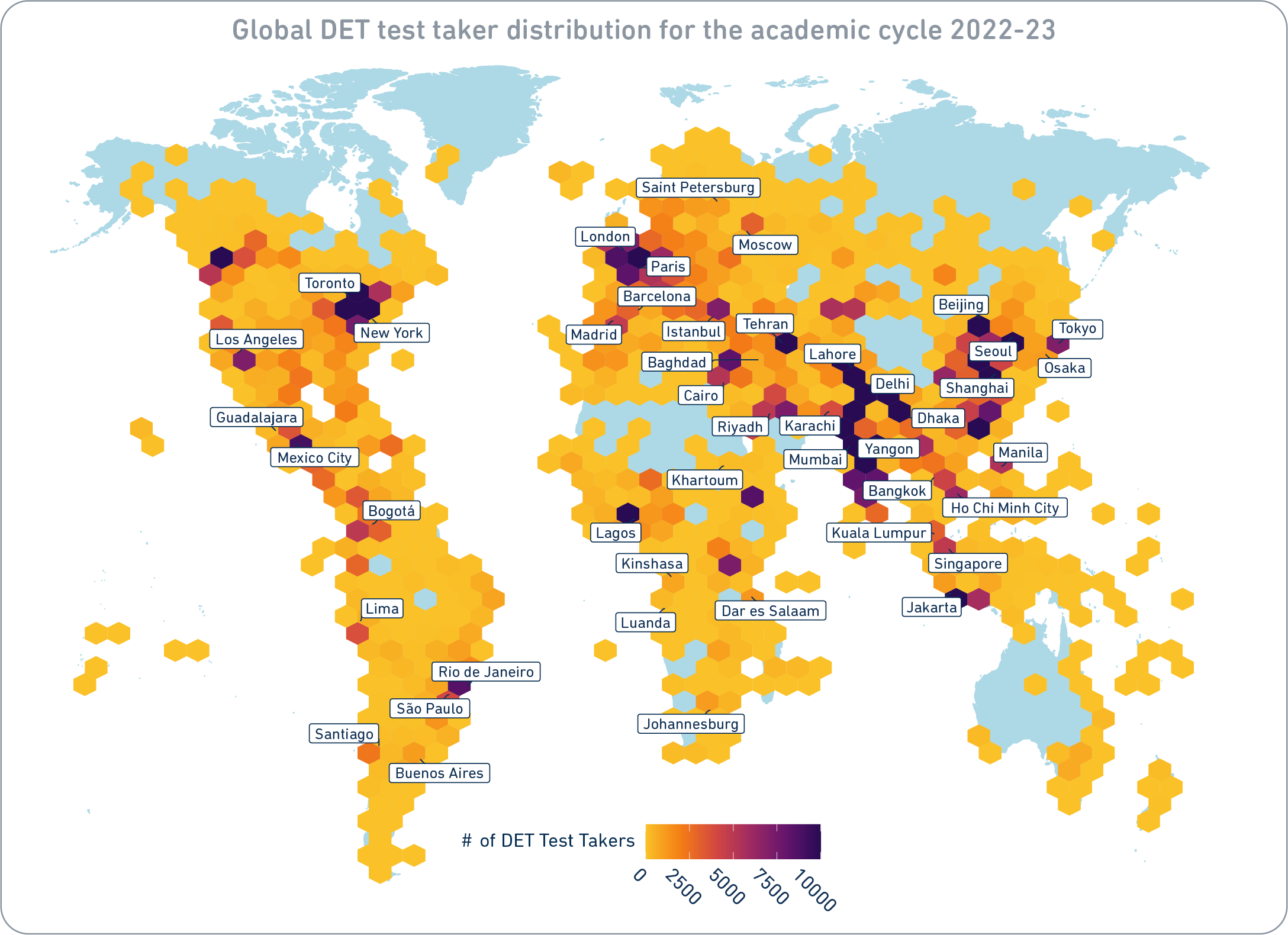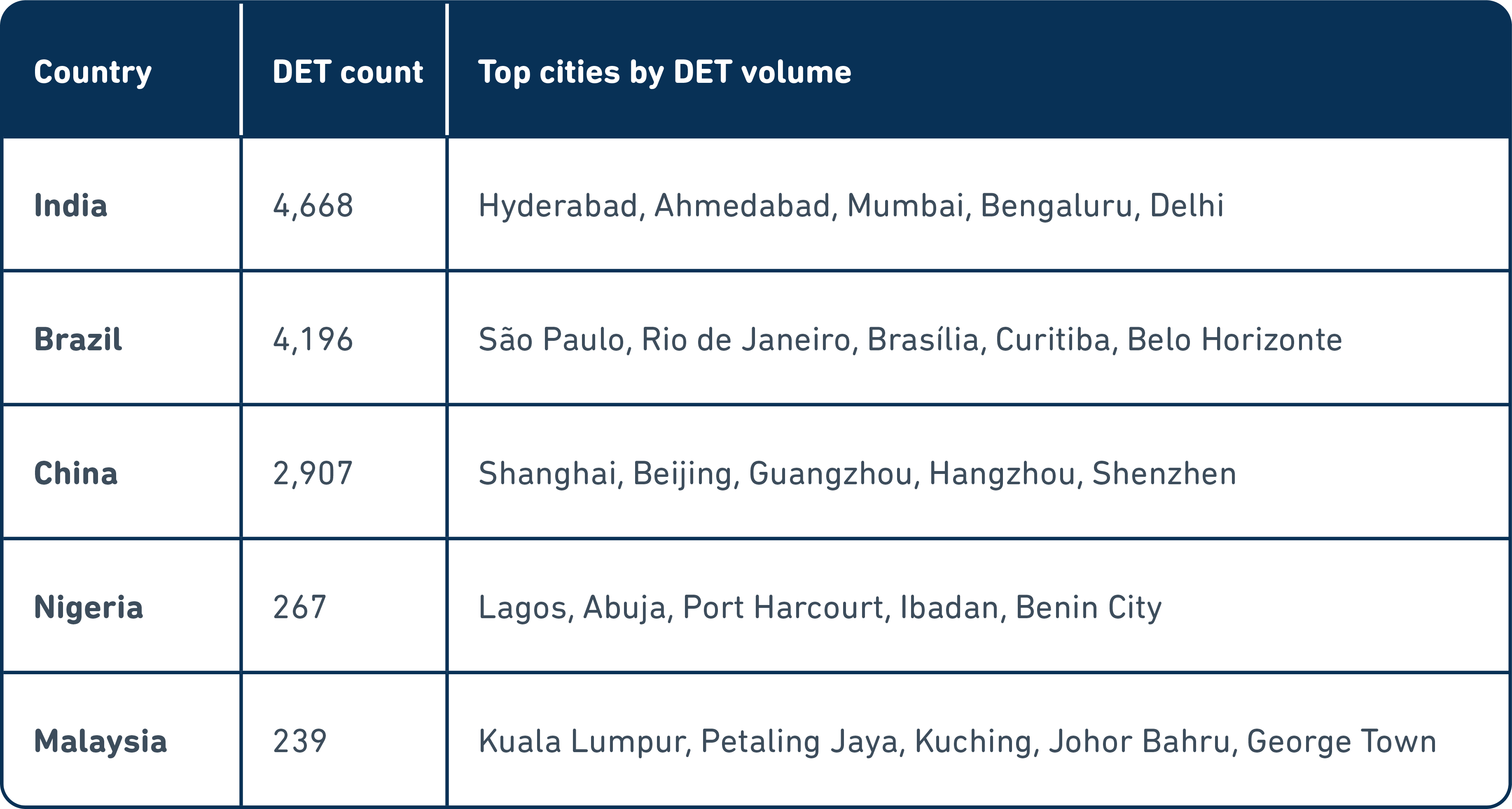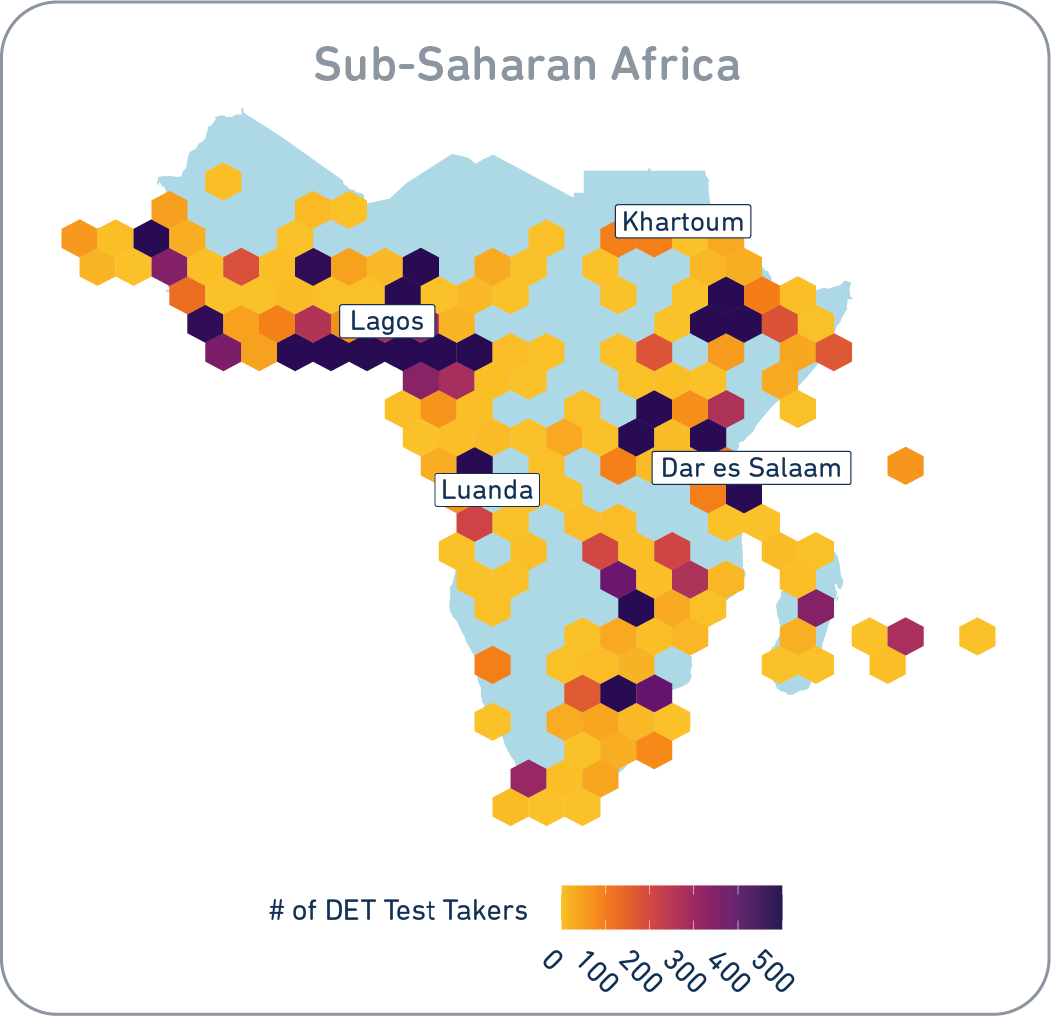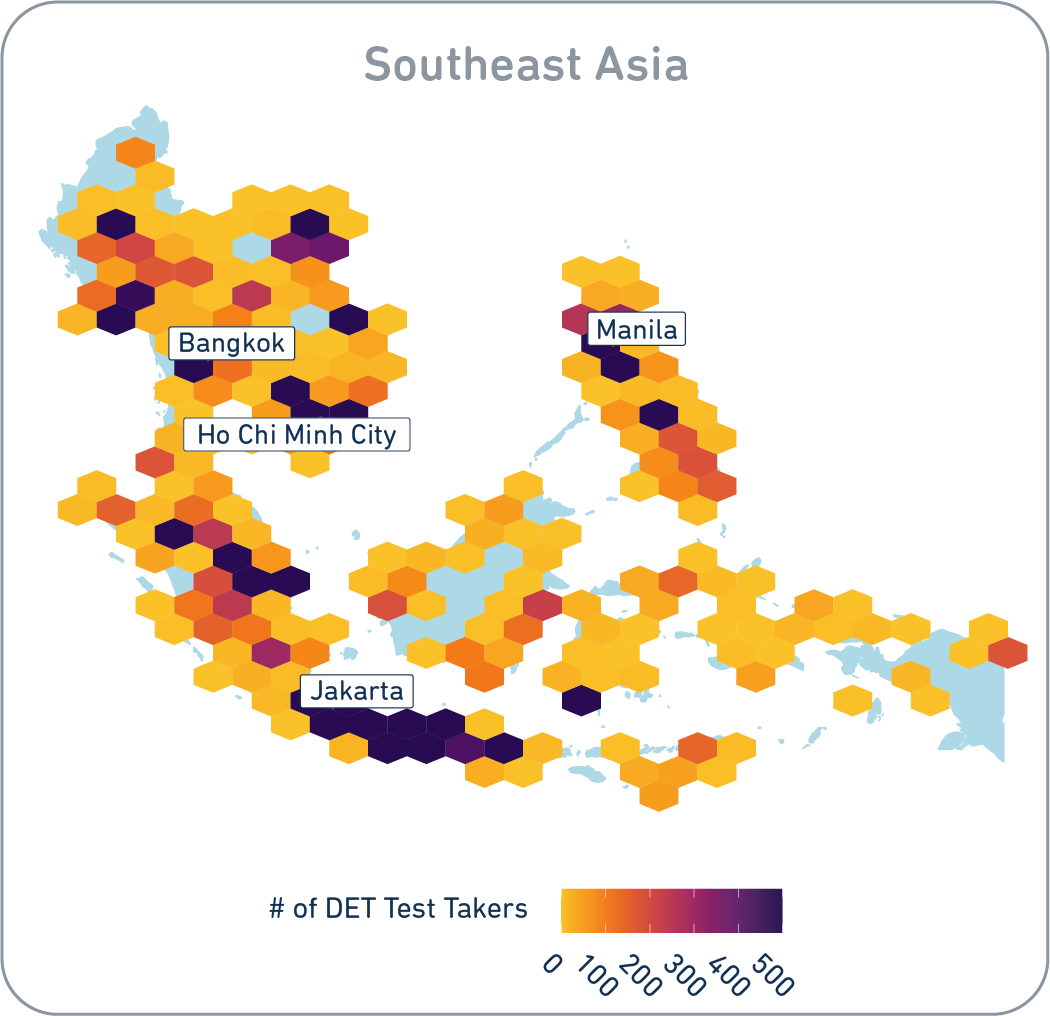Tamsin Thomas works to support the recognition of the DET in the United Kingdom. Dr. Will Belzak is a Senior Psychometrician on the DET Assessment Research team.
Freeing high-stakes English language testing from test centers means people can certify their proficiency from anywhere in the world—and we do mean anywhere! In this analysis of DET data, we consider the geographic distribution of DET test takers and examine how digital exams like the DET extend English language testing to talented individuals all across the globe.

Test centers can't meet the global demand for testing
For decades, the only way for people to certify their English proficiency was by taking a test in a testing center. And for decades, this system has been failing. Capacity constraints in English testing affect students every day. We know from experience: over the years, many of our language app learners reached out expressing their frustration with the international testing system. They wanted to prove their English proficiency, but couldn’t access traditional test centers, which are simply unable to meet the global demand.
Not counting the costs involved, for traditional tests, it can take weeks and even months for a student to register for a test, sit the exam, and receive a certified score. This puts barriers in place for students wanting to submit complete application files, meet their English conditions, and make timely visa applications—and that assumes there is a test center for them to use at all.
This is why we launched the Duolingo English Test in 2016, disrupting the high stakes English proficiency testing market by enabling test takers around the world to prove their English ability for high stakes purposes online, at home, and on-demand—no appointment required.
Using AI, we’ve innovated every stage of the test development, delivery and assurance process to enable quicker, more accessible without compromising on academic rigor or security—all for a fraction of the cost of traditional tests. A test taker can register for the DET, take the test, and receive their results in just 48 hours; 12 if they pay for fast-track invigilation, freeing them to complete their applications and continue on their higher education journey.
Digital tests can help institutions broaden their recruitment efforts
IELTS, the largest test center operator in the English proficiency testing space, has over 4,000 physical test centers. The scale of operation is impressive, but offers nowhere near the reach of digital tests. By comparison, the DET was taken in almost 40,000 locations—and that’s just in 2023! Since we launched the DET eight years ago, we’ve administered millions of tests in over 230 countries and territories. During that time, international students have chosen the DET to meet their English language requirements in over 70,250 towns, cities and villages worldwide.
Table: DET location counts in a sample of key markets

Even in some of the largest anglophone host countries in the world, where traditional English testing provision is strong, we still see high demand for digital tests! In Sydney, Australia, the DET has been taken over 2,000 times. Another ~2,000 have been taken in Manchester, UK, and nearly 7,000 in Winnipeg, Canada. In countries with no alternative testing provision, as well as in those with some of the strongest provision, students continue to choose digital tests.
Digital tests reach talent beyond major metropolises
In the hunt for global talent—be it for students, researchers, scientists—we need to look far beyond the major cities. Only half of the Nobel Prize winners for Physics of the past decade hailed from major metropolises. Because it is accessible anywhere in the world, digital testing helps reach the best and brightest talent in even the most remote corners of the globe.
Not only has the DET improved the test taker experience (TTX) for aspiring international scholars worldwide, it has also made it possible for universities to broaden their recruiting efforts, unlocking a wider pool of talented students. DET test takers are progressing to study at the world’s leading universities, from Yale to Imperial, to McGill to Trinity College Dublin.
There are 55 cities in the world that have hosted more than 5,000 DET test takers, and a further 200 with test taker volumes over 500. In Burundi, Bujumbura had just over 500 students take the DET last cycle, as did Léon in Mexico and Freetown in Sierra Leone. Around the world, nearly 70,000 cities, towns and villages have hosted smaller populations of intrepid students who want to study internationally. And thousands of tests have been taken in countries that don’t have any access to test centers at all.
Visualizing the geographic distribution of digital testing




Digital tests can help institutions diversify!
All around the world, students aspire to study at international universities. The student recruitment industry has made decades of investment in the infrastructure that supports the international mobility of talented students, but that investment is concentrated in large cities. As institutions increasingly look to diversify their recruitment, it is clear that digital testing has an essential role to play in overcoming the structural barriers to the diversification of the international student body.
*Test taker location data is based on the geolocation of IP addresses based on test uploads. In the graphics, the DET test takers' locations have been jittered by ‘at most’ 1 degree in both latitude and longitude for privacy purposes.
